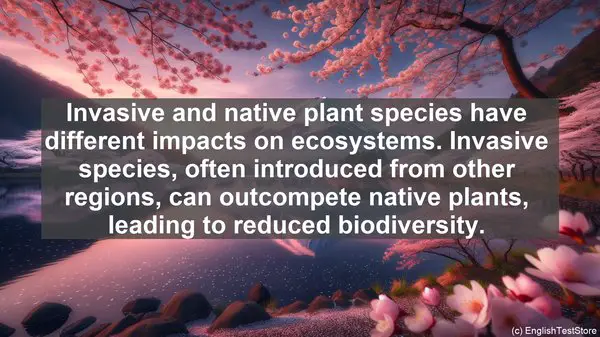Introduction: The Importance of Language in Agroecology
Welcome to today’s lesson on agroecology. While the principles and practices of agroecology are fascinating, it’s important to have a strong grasp of the language used. In this lesson, we’ll be exploring the top 10 commonly confused words in agroecological practices. Let’s get started!
1. Organic vs. Conventional: Understanding the Difference
One of the most common confusions in agroecology is the difference between organic and conventional farming. While both methods involve cultivating crops, organic farming relies on natural inputs and avoids synthetic chemicals. On the other hand, conventional farming often utilizes synthetic fertilizers and pesticides. Understanding this distinction is crucial for making informed choices in agricultural practices.

2. Biodiversity vs. Monoculture: Exploring Ecosystems
Biodiversity and monoculture represent two contrasting approaches to farming. Biodiversity refers to the variety of plant and animal species in an ecosystem, while monoculture involves cultivating a single crop over a large area. While monoculture can maximize yield for a specific crop, it often leads to ecological imbalances. Biodiversity, on the other hand, promotes resilience and natural pest control. Striking a balance between the two is a key consideration in agroecology.

3. Sustainable vs. Intensive: Balancing Productivity and Resources
Sustainable and intensive farming are two approaches with different priorities. Sustainable farming aims to maintain long-term productivity while minimizing environmental impact. It often involves practices like crop rotation and natural pest control. Intensive farming, on the other hand, focuses on maximizing output per unit area. While intensive methods can be efficient, they may require significant inputs. The choice between the two depends on factors like land availability and market demands.
4. Compost vs. Fertilizer: Nourishing the Soil
Compost and fertilizer are both used to enrich the soil, but they differ in their composition and mode of action. Compost is organic matter that has decomposed, providing a range of nutrients and improving soil structure. Fertilizers, on the other hand, are often synthetic and provide specific nutrients in concentrated forms. While both have their uses, many agroecological practitioners prefer compost for its long-term benefits and soil-building properties.
5. Perennial vs. Annual: Understanding Plant Lifecycles
Perennial and annual plants have different lifecycles, and this impacts their role in agroecology. Perennials, like trees and some herbs, live for multiple years. They often have deep root systems, which can help prevent soil erosion and improve water infiltration. Annuals, on the other hand, complete their lifecycle in a single year. They are often used for quick yields or in crop rotation systems. A mix of both can provide a balanced agroecosystem.
6. Pollination vs. Fertilization: The Role of Bees
Pollination and fertilization are two processes crucial for plant reproduction, and bees play a significant role in both. Pollination involves the transfer of pollen from the male to the female part of a flower, leading to seed formation. Fertilization, on the other hand, is the fusion of the male and female gametes, resulting in embryo development. Bees, with their foraging behavior, are vital for both processes, making them indispensable in agroecology.
7. Erosion vs. Sedimentation: Understanding Soil Movement
Erosion and sedimentation are two processes that impact soil health. Erosion refers to the removal of topsoil by wind or water, often leading to nutrient loss and reduced fertility. Sedimentation, on the other hand, is the deposition of eroded soil in water bodies, which can harm aquatic ecosystems. Both processes can have severe consequences for agriculture, emphasizing the need for erosion control measures in agroecological practices.
8. Regenerative vs. Degenerative: Farming for the Future
Regenerative and degenerative farming represent two contrasting approaches to land use. Regenerative practices aim to improve soil health, enhance biodiversity, and sequester carbon. They often involve techniques like cover cropping and agroforestry. Degenerative practices, on the other hand, deplete soil resources and can lead to environmental degradation. By adopting regenerative methods, agroecological practitioners can contribute to a more sustainable and resilient food system.
9. Invasive vs. Native: Understanding Plant Species
Invasive and native plant species have different impacts on ecosystems. Invasive species, often introduced from other regions, can outcompete native plants, leading to reduced biodiversity. They can also have economic and ecological consequences. Native species, on the other hand, are adapted to the local environment and often provide important ecosystem services. Recognizing and managing invasive species is a crucial aspect of agroecological stewardship.
10. Resilience vs. Vulnerability: Adapting to Change
Resilience and vulnerability are two concepts that are highly relevant in agroecology. Resilience refers to the ability of an agroecosystem to withstand and recover from disturbances, such as extreme weather events. Vulnerability, on the other hand, represents the susceptibility to such disruptions. By promoting practices that enhance resilience, such as diversification and soil conservation, agroecological systems can be better prepared for the challenges of a changing climate.
